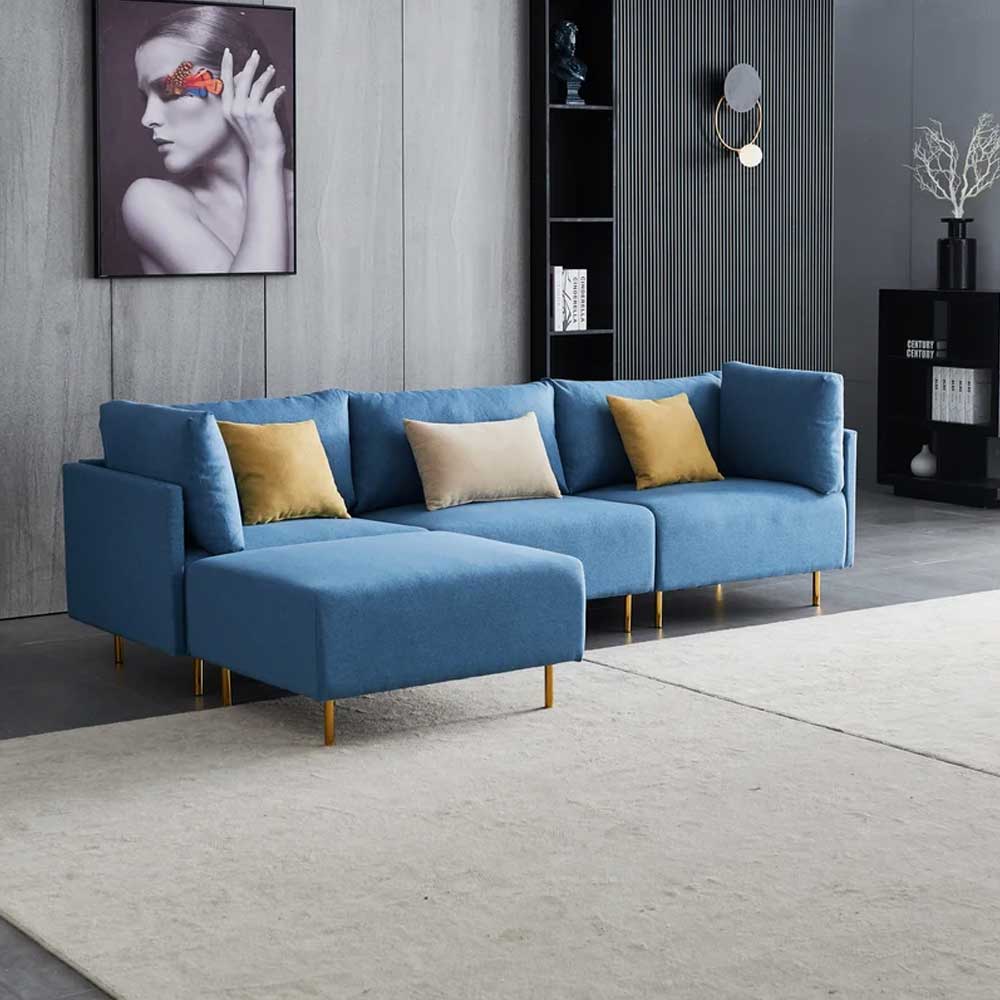Are you tired of staring at those outdated popcorn ceilings in your home? You’re not alone. Popcorn texture, also known as acoustic or cottage cheese texture, was once popular in the 1960s and 1970s due to its ability to hide imperfections and dampen sound. However, in recent years, homeowners have been opting to remove this texture for various reasons. In this article, we will explore the many benefits of removing popcorn texture, including improved aesthetics, increased home value, and a reduction in health risks associated with asbestos and dust accumulation. So if you’ve been contemplating getting rid of that popcorn ceiling, keep reading to find out why it could be a worthwhile decision for your home.
- Introduction: Understanding the Popcorn Texture
The popcorn ceiling, also famously known as the cottage cheese ceiling or acoustic ceiling, was once a popular trend in the mid-20th century. Its distinctive bumpy texture became highly prevalent in residential homes due to its cost-effectiveness and ability to hide imperfections. However, with changing times and evolving design preferences, the popcorn texture has lost its charm and is now considered outdated and unsightly. As a result, many homeowners are opting to remove the popcorn texture and embrace a more modern and smooth finish. This section will delve into the intricacies of understanding the popcorn texture and explore the reasons why its removal can offer numerous benefits. To comprehend the significance of removing the popcorn texture, it is vital first to grasp what it entails. Popcorn ceilings were created by spraying a mixture of water, paint, and Styrofoam or asbestos particles onto the ceiling’s surface. This technique was primarily employed in the mid-20th century to control acoustics and minimize echoes in interior spaces, particularly in commercial buildings and apartments. Homeowners saw this trend as an inexpensive and quick solution to conceal any flaws or imperfections while providing a textured aesthetic. It served as a practical means to avoid the need for extensive repairs or labor-intensive plastering.
While the popcorn texture removal had its benefits, it came with several downsides that have led to its declining popularity. One significant drawback is its association with health risks. Considering that asbestos was commonly used in the initial mixture, many popcorn ceilings installed before the mid-1980s contained this hazardous material. Asbestos is a known carcinogen that, when disturbed, can release tiny fibers into the air. Inhaling these fibers over an extended period can lead to severe health conditions, including lung cancer and mesothelioma. Therefore, homeowners with older popcorn textures must remove them to ensure the safety and well-being of their families. Another disadvantage of popcorn ceilings lies in their surface texture, which tends to accumulate dust, dirt, and cobwebs over time. Cleaning or dusting these ceilings can be an arduous task due to their irregular and uneven surface. Additionally, while the texture was initially designed to absorb sound, it can also act as a collector of unwanted noise. The nooks and crannies of the popcorn texture can trap and reflect sound waves, creating a less-than-desirable acoustic environment. This is particularly problematic in rooms where sound quality is important, such as home theaters, music studios, or even simple living areas where peace and tranquility are desired. Aesthetically, the popcorn texture has become outdated and less visually appealing. With contemporary design trends gravitating towards clean lines and minimalism, the textured appearance of popcorn ceilings can create a dated and cluttered look. Removing the popcorn texture can open up various design possibilities, allowing homeowners to transform their living spaces into modern and sophisticated environments. A smooth and sleek ceiling instantly elevates a room’s overall appearance, making it feel more spacious, clean, and inviting.
In conclusion, the popcorn texture was once a popular and practical solution for concealing imperfections and providing acoustic control. However, modern design preferences, health concerns, and the impracticality of cleaning and maintaining these ceilings have led homeowners to opt for their removal. By understanding the popcorn texture’s origins and drawbacks, one can appreciate the rationale behind its elimination. The subsequent sections of this article will delve into the benefits of
removing the popcorn texture and explore the various methods and considerations involved in the process.
Explain what popcorn texture is and why it was commonly used in older homes
Popcorn texture, also known as acoustic or cottage cheese ceiling, refers to a type of textured finish that was widely popular in older homes. If you’ve ever looked up at a ceiling in an older house and noticed a bumpy, lumpy, or stippled surface, chances are you were gazing at a popcorn texture. So, why was this peculiar textured finish so prevalent in older homes? The answer lies in its historical context and the benefits it offered to homeowners during its heyday. Understanding the reasons behind its popularity can shed light on why many people today choose to remove it. Back in the mid-20th century, popcorn texture gained significant traction in the home construction industry for several reasons. Firstly, it was an exceptionally cost-effective option. The texture’s application process was relatively quick and straightforward, requiring minimal labor and materials. This made it an appealing choice for home builders looking for an affordable way to finish ceilings.
Furthermore, popcorn texture played a pivotal role in addressing certain construction challenges that arose during that era. It was often used to conceal imperfections on the ceiling’s surface. By applying this textured finish, builders could effectively hide unevenness, cracks, or other defects that might have surfaced during the construction process. The texture also had acoustical benefits, which contributed to its widespread implementation. Popcorn texture contains small particles, often made from materials like Styrofoam or vermiculite, which absorb sound waves effectively. This feature made it particularly desirable for homeowners seeking to reduce noise transmission between rooms or floors. The popcorn texture acted as a noise barrier, helping to improve the overall comfort and privacy within the home.
Another reason why popcorn texture removal gained popularity was its ability to mask stains and discolorations. Over time, even the most diligent homeowners may encounter issues like water damage, smoke stains, or other unsightly marks on their ceilings. The texture’s uneven surface and speckled appearance helped to camouflage these imperfections, reducing the need for frequent maintenance or repainting. Moreover, popcorn texture was seen as a trendy design choice during its peak in popularity. Its bumpy texture provided a unique visual appeal, setting it apart from conventional smooth ceilings. Decorators and homeowners alike were drawn to the distinctiveness that this textured finish added to a room’s overall aesthetic. It became an iconic element of mid-century architecture, often associated with a retro or vintage charm. However, as time has passed and design preferences have evolved, the allure of popcorn texture has diminished. Many homeowners today are opting to remove this outdated textured finish for various reasons. Despite its benefits, the downsides of popcorn texture, such as its difficulty to clean, collect dust and allergens, and its potential to deteriorate over time, have become increasingly apparent.
Furthermore, smooth and sleek ceilings have become the new norm in modern interior design. Homeowners are drawn to the clean lines, simplicity, and versatility that smooth ceilings offer. Removing popcorn texture is often a crucial step in updating and modernizing the appearance of older homes, increasing their value, and creating a more desirable living space.
In conclusion, popcorn texture was commonly used in older homes due to its affordability, ability to hide imperfections, acoustical benefits, and trendy design appeal. However, as design preferences have shifted, many homeowners are now choosing to remove this textured finish to achieve a more contemporary look, improve cleanliness, and decrease maintenance requirements.
Briefly Mentioning the Flaws Associated with Popcorn Texture
Popcorn texture, also known as popcorn ceiling, was once a popular trend in interior design. However, times have changed, and this textured finish has fallen out of favor with many homeowners. The flaws associated with popcorn texture are numerous, ranging from its outdated and unappealing appearance to the possible health hazards it poses. In this section, we will delve into these drawbacks and shed light on why many individuals are seeking to remove popcorn textures from their homes. Given these flaws, it is no wonder that many homeowners are deciding to remove popcorn texture and embrace smoother and more modern surfaces. Removing popcorn texture can dramatically transform the look and feel of a room. By opting for a smooth ceiling, homeowners can create a fresher and more updated appearance, increasing the overall aesthetic value of their living spaces.
In summary, popcorn texture’s flaws have become increasingly apparent in the face of changing design preferences and health concerns. Its outdated appearance, difficulty in cleaning and maintenance, as well as potential health hazards, have led many homeowners to seek removal options. By leaving behind the drawbacks of popcorn texture, homeowners can create a more visually appealing, practical, and healthier living environment for themselves and their families.
Enhanced Aesthetics and Modernization
When it comes to home improvement projects, enhancing the aesthetics of your living space is often at the top of the list. One of the most effective ways to achieve this is by removing the outdated popcorn texture from your ceilings and walls. Not only does this process lend a modern touch to your home, but it also offers numerous other aesthetic benefits that can transform the overall look and feel of your living space.
Firstly, the removal of popcorn texture instantly updates the style of your home. Popularized in the mid-20th century, this type of texture was widely used in homes built during this era. However, as time went on, homeowners increasingly found this surface treatment to be unappealing and outdated. By removing the popcorn texture, you can eliminate this relic of the past and give your home a fresh, contemporary look that is more in line with modern design trends.
Another advantage of removing the popcorn texture is the ability to create a more uniform and consistent appearance throughout your home. Popcorn ceilings can often make a room feel small and closed-in, casting unflattering shadows and diminishing the overall sense of space. Without the texture, the ceiling becomes smooth and more reflective of light, instantly brightening and expanding the room. This enhanced visual continuity lends a feeling of harmony and flow to your living space, making it more inviting and visually appealing.
Moreover, removing popcorn texture offers a blank canvas for creativity and personalization. Once the texture is gone, you have a variety of options to choose from when it comes to repainting or retexturing your ceilings and walls. You can opt for a clean, crisp look with a fresh coat of paint in your desired color, or you can explore different texturing techniques to add depth and character to your surfaces. The absence of popcorn texture allows you to exercise your creative freedom, tailor your décor to your style, and truly make your house feel like a home. In addition to the aesthetic improvements, removing popcorn texture also provides practical benefits. One such advantage is easier maintenance and cleaning. Popcorn ceilings tend to trap dust and debris in their crevices, making them notoriously difficult to clean. The removal of this texture simplifies the cleaning process, allowing you to maintain a cleaner and healthier living environment.
Furthermore, many homeowners often underestimate the impact popcorn texture can have on the acoustics of a room. The rough, bumpy surface tends to reflect and amplify sound, which can create unwanted echoes and result in a noisier living space. By opting for a smooth ceiling surface, you can significantly dampen sound reflections, making your rooms quieter and more comfortable. To sum up, removing popcorn texture brings a host of aesthetic benefits and modernizes your living space. From updating the overall style to creating a more uniform look and maximizing design possibilities, eliminating this dated texture allows you to transform your home into a visually appealing, personalized haven. Moreover, the removal process makes cleaning and maintenance easier while also improving the acoustics of your rooms. So, if you’re looking to enhance the aesthetics and modernize your home, removing the popcorn texture is a project well worth considering.
Discuss how removing popcorn texture instantly updates the look and feel of a room
When it comes to updating the look and feel of a room, many homeowners overlook the importance of the ceiling. The popcorn texture, once popular in the 1960s and 1970s, has now become outdated and can give a room a dated and drab appearance. However, the good news is that removing popcorn texture can instantly update the look and feel of a room, giving it a fresh and modern appeal. In this section, we will dive into the benefits of removing popcorn texture and how it can transform your space.
First and foremost, removing popcorn texture is a great way to modernize your room. The unique texture, with its bumpy and uneven surface, can make a room feel stuffy and closed-in. By getting rid of this outdated feature, you can open up your space and create a more contemporary and inviting environment. Smooth ceilings are not only visually appealing, but they can also make a room feel larger and more spacious, especially in smaller rooms. In addition to modernizing the space, removing popcorn texture can also enhance the overall aesthetics of a room. This texture tends to collect dust, dirt, and cobwebs, making it difficult to clean and maintain. As a result, it can appear yellowed, stained, or discolored over time. By eliminating the popcorn texture, you can reveal a clean and flawless ceiling, instantly brightening up the room and giving it a fresh and polished look. Moreover, a smooth ceiling provides a blank canvas for creativity, allowing you to experiment with different paint colors, light fixtures, and decorative elements. Another significant benefit of removing popcorn texture is the improvement in lighting. The uneven surface of popcorn ceilings tends to create shadows and can make a room feel darker than it is. By removing this texture, natural and artificial light can bounce off the ceiling more evenly, brightening up the space and making it feel more illuminated. This not only improves the functionality of the room but also enhances the ambiance and mood, creating a more welcoming and inviting atmosphere. Furthermore, removing popcorn texture can have a positive impact on the air quality of your home. Popcorn texture often contains asbestos, a harmful substance that was commonly used in construction materials until the 1980s. Airborne asbestos particles can pose serious health risks when inhaled, including lung disease and cancer. By removing the popcorn texture, you can eliminate the potential hazard and create a safer and healthier environment for you and your loved ones.
Lastly, by removing popcorn texture, you can increase the resale value of your home. Potential buyers tend to prefer updated and modern spaces, and the presence of popcorn ceilings can be a major turnoff for many. By investing in the removal of this outdated feature, you can attract more buyers and potentially increase your property’s market value. Additionally, it shows that you have taken care of your home and have kept it up to date with current design trends.
In conclusion, removing popcorn texture from your ceilings can offer numerous benefits that can greatly improve your living space. Besides giving your home a fresher and more modern look, it also eliminates potential health risks associated with aging popcorn ceilings. The process of removing this texture is not as daunting as it may seem, with various techniques available for both DIY enthusiasts and professionals. By opting to remove the popcorn texture, you can enjoy a smoother and easier-to-maintain surface, reduce dust and allergen accumulation, and increase the overall value of your property. So, don’t hesitate to take the leap and embark on the journey of upgrading your ceilings – the benefits are certainly worth it!
Website: https://mjhomepainters.com/
















